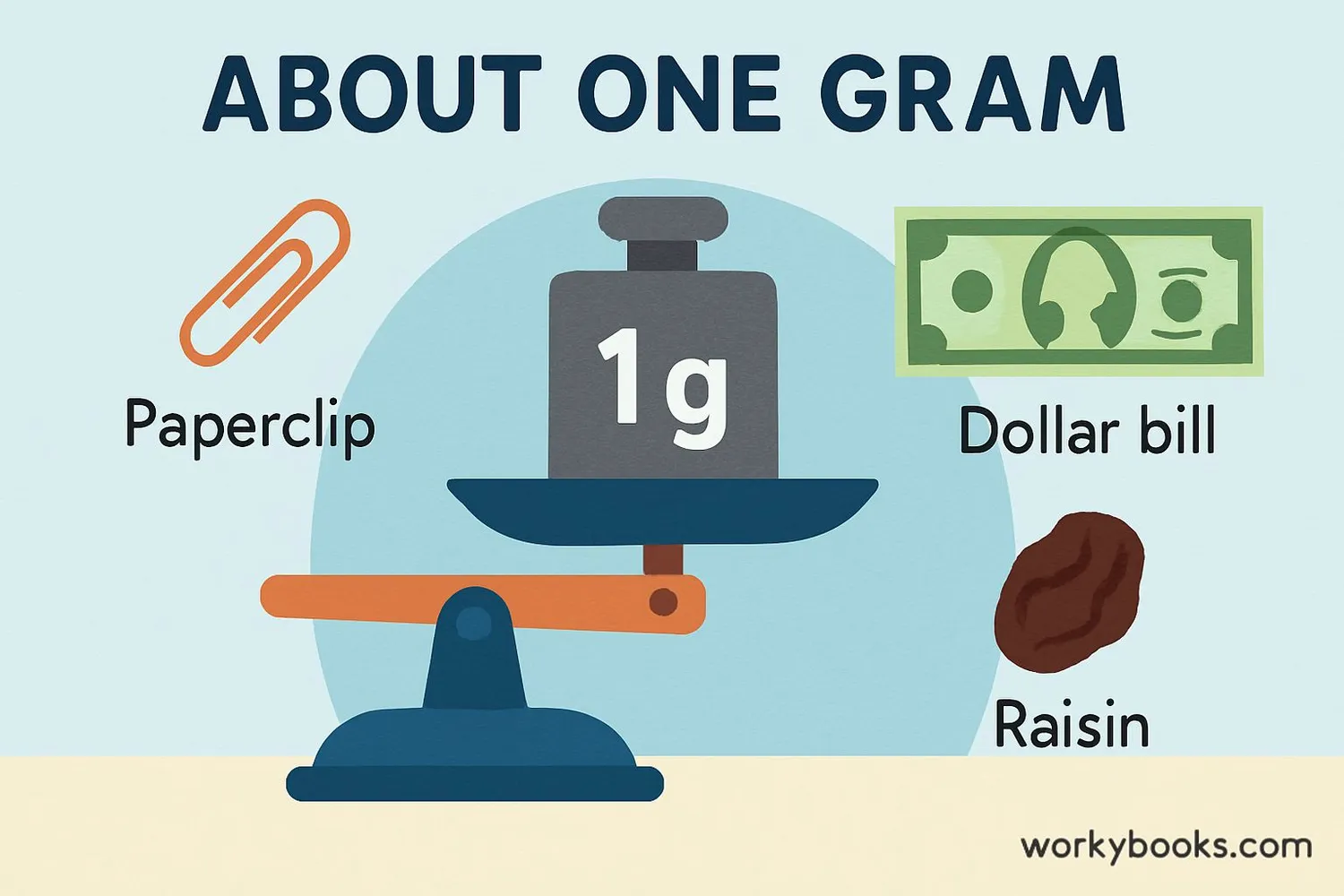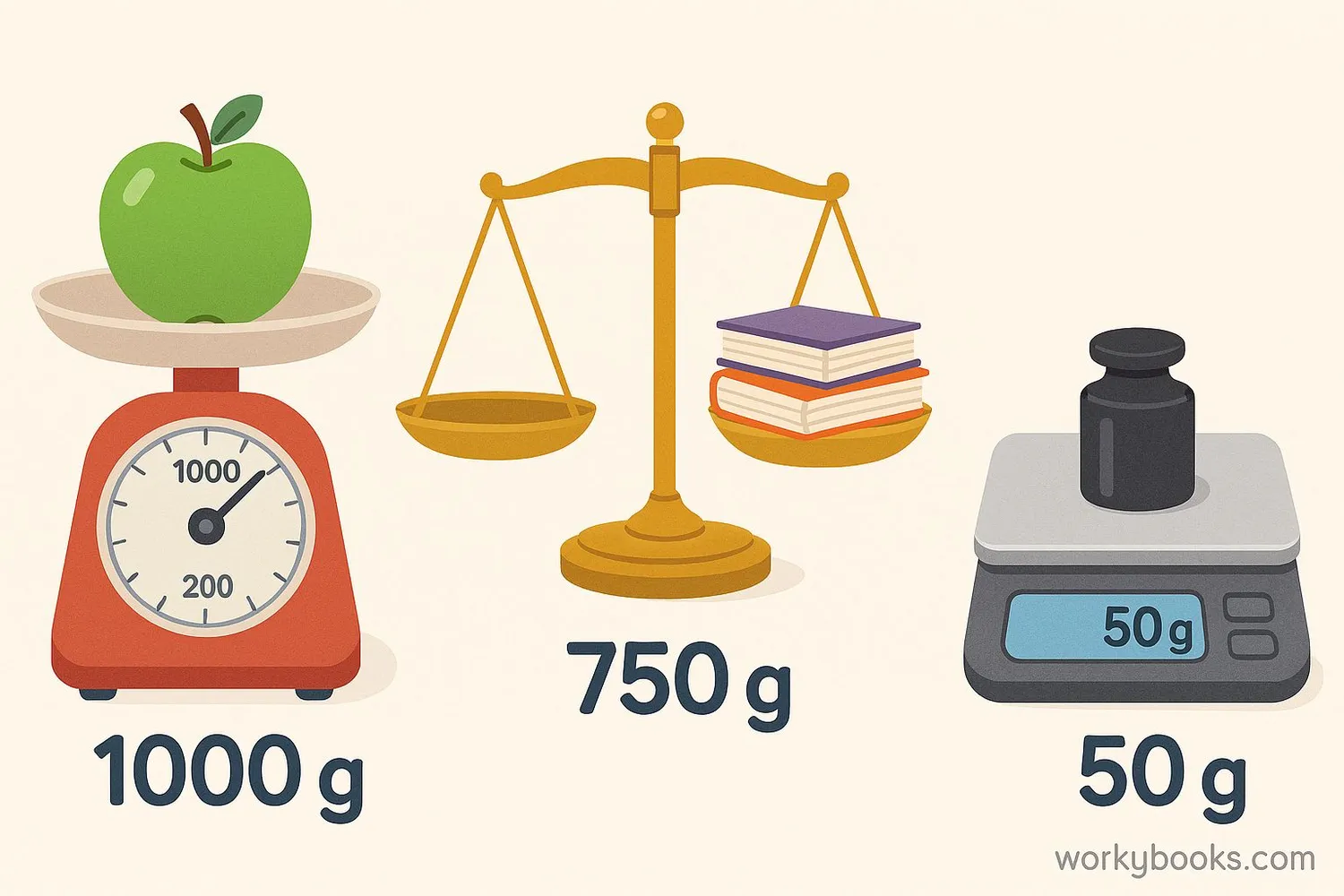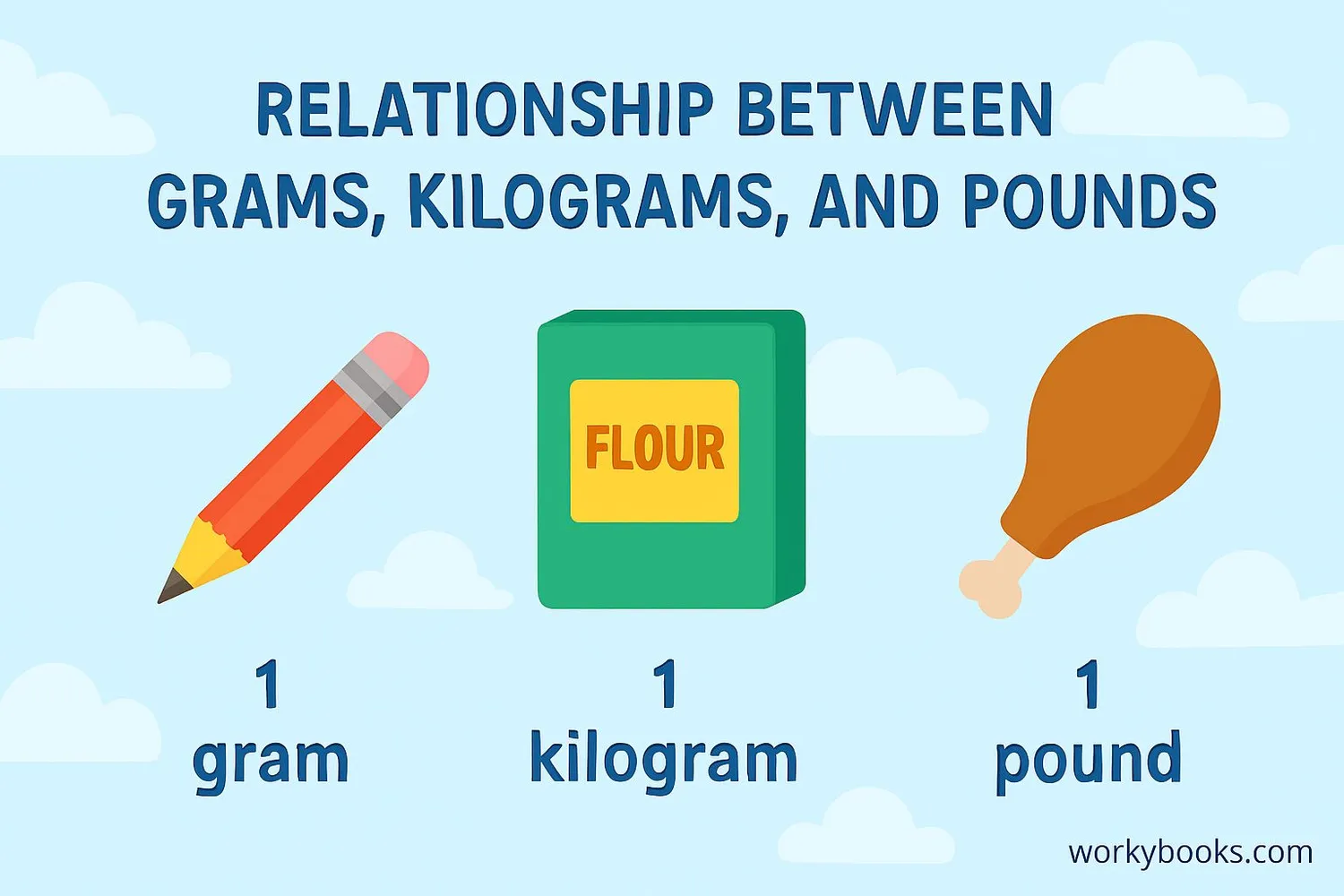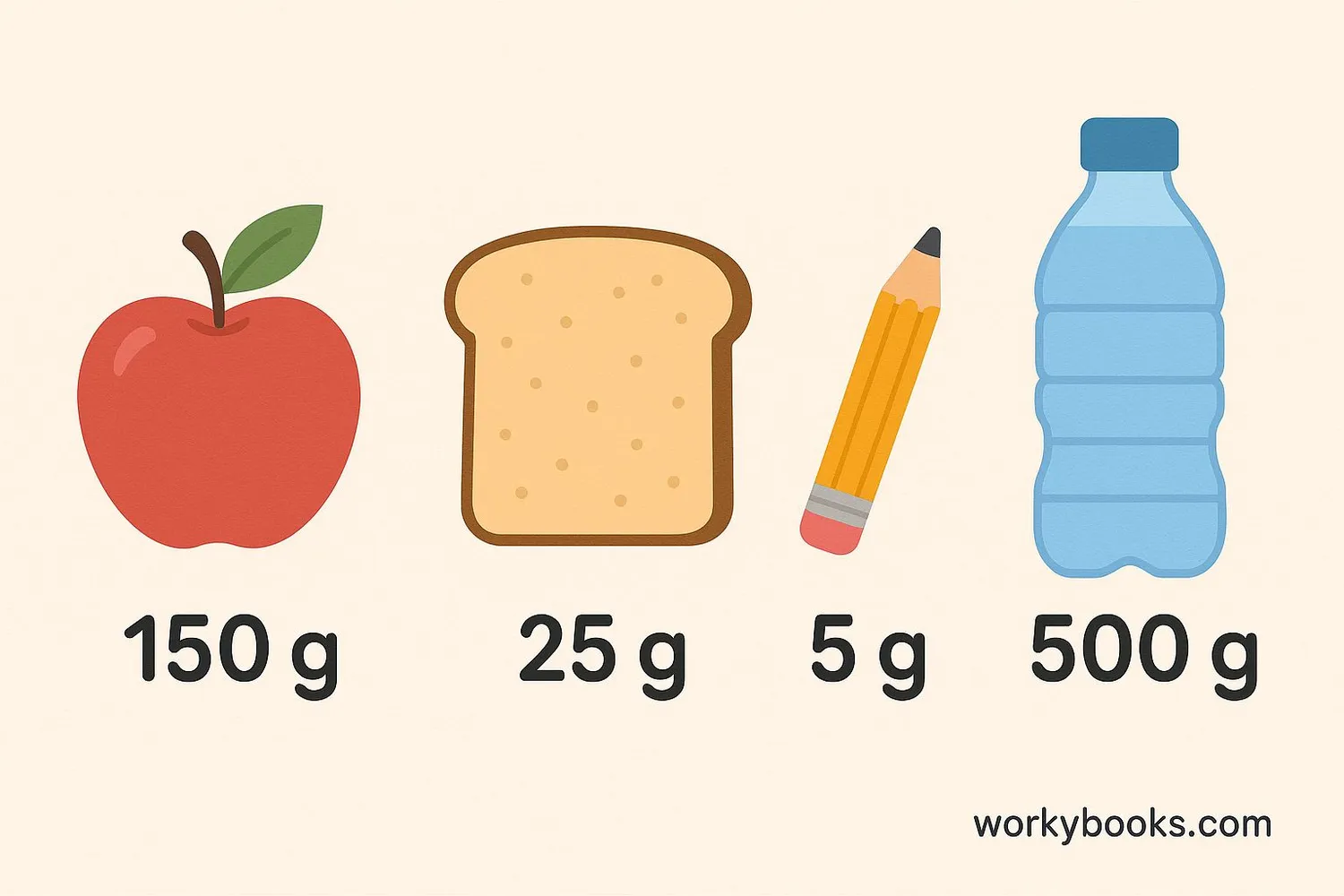Gram - Definition, Examples, Quiz, FAQ, Trivia
Learn about mass measurement in the metric system with clear explanations and practice activities
What is a Gram?

A gram is a unit of measurement for mass in the metric system. It is a very small unit - about the weight of a paperclip, a raisin, or a dollar bill.
The gram is part of the metric system, which is used by most countries around the world. The metric system is based on multiples of 10, which makes it easy to convert between different units.
The word "gram" comes from the Greek word "gramma," which means "small weight." Grams are often used to measure small, lightweight objects like food ingredients, jewelry, and medications.
Key Concept
A gram is a metric unit for measuring mass. One gram is about the weight of a small paperclip.
Measuring with Grams

We use special tools called scales to measure mass in grams. There are different types of scales:
Balance scales: These have two pans. You put the object to be measured on one pan and add gram weights to the other pan until they balance.
Digital scales: These show the weight on a screen. They are very precise and easy to read.
Spring scales: These use a spring to measure weight. The object stretches the spring, and the amount of stretch shows the weight.
When measuring with grams, it's important to make sure the scale is on a flat surface and set to zero before placing the object on it.
Remember
Mass is the amount of matter in an object, while weight is the force of gravity on that object. On Earth, we often use these terms interchangeably.
Gram Conversion

Since the metric system is based on multiples of 10, converting between units is straightforward:
Metric Conversion
To convert grams to kilograms, divide by 1,000. To convert kilograms to grams, multiply by 1,000.
Imperial Conversion
To convert grams to pounds, divide by 453.6. To convert pounds to grams, multiply by 453.6.
Example: Convert 2,500 grams to kilograms
Step 1: Start with the measurement in grams → 2,500 g
Step 2: Divide by 1,000 → 2,500 ÷ 1,000
Step 3: Calculate the result → 2.5 kg
Gram Conversion Chart
| Grams (g) | Kilograms (kg) | Pounds (lb) |
|---|---|---|
| 10 g | 0.01 kg | 0.022 lb |
| 100 g | 0.1 kg | 0.22 lb |
| 250 g | 0.25 kg | 0.55 lb |
| 500 g | 0.5 kg | 1.1 lb |
| 1,000 g | 1 kg | 2.2 lb |
| 1,500 g | 1.5 kg | 3.3 lb |
| 2,000 g | 2 kg | 4.4 lb |
Conversion Tip
Remember that "kilo" means 1,000, so a kilogram is 1,000 grams. This pattern works for other metric units too (kilometer = 1,000 meters).
Real-World Examples

Grams are used to measure many everyday objects. Here are some examples:
Food items:
- A slice of bread: 25-30 grams
- An apple: 150-200 grams
- A tablespoon of sugar: 12-15 grams
Household items:
- A paperclip: about 1 gram
- A pencil: 5-10 grams
- A smartphone: 150-200 grams
Conversion example: A bag of flour weighs 2.5 kilograms. How many grams is this?
Solution: 2.5 kg × 1,000 = 2,500 grams
Another example: A package weighs 1,360.8 grams. How many pounds is this?
Solution: 1,360.8 ÷ 453.6 ≈ 3 pounds
Practice looking at food labels and packages to see how mass is measured in grams.
Practice Tip
Look at nutrition labels on food packages to see measurements in grams. This will help you become familiar with how much different weights look like.
Measurement Practice Quiz
Test your understanding of gram measurement with this 5-question quiz. Choose the correct answer for each question.
Frequently Asked Questions
Here are answers to common questions about gram measurement:
Measurement Trivia
Discover interesting facts about measurement systems:
Origin of the Gram
The gram was originally defined in 1795 as the mass of one cubic centimeter of water at the melting point of ice. This made it easy to reproduce the standard measurement.
International Prototype
From 1889 to 2019, the kilogram was defined by a physical platinum-iridium cylinder called the International Prototype Kilogram, kept in a vault in France.
Universal Standard
In 2019, the kilogram was redefined based on Planck's constant, a fundamental constant of nature. This means the definition doesn't rely on a physical object that could change over time.
Heaviest Fruit
The world's heaviest pumpkin weighed over 1,190 kilograms (2,624 pounds)! That's more than 1 million grams!


